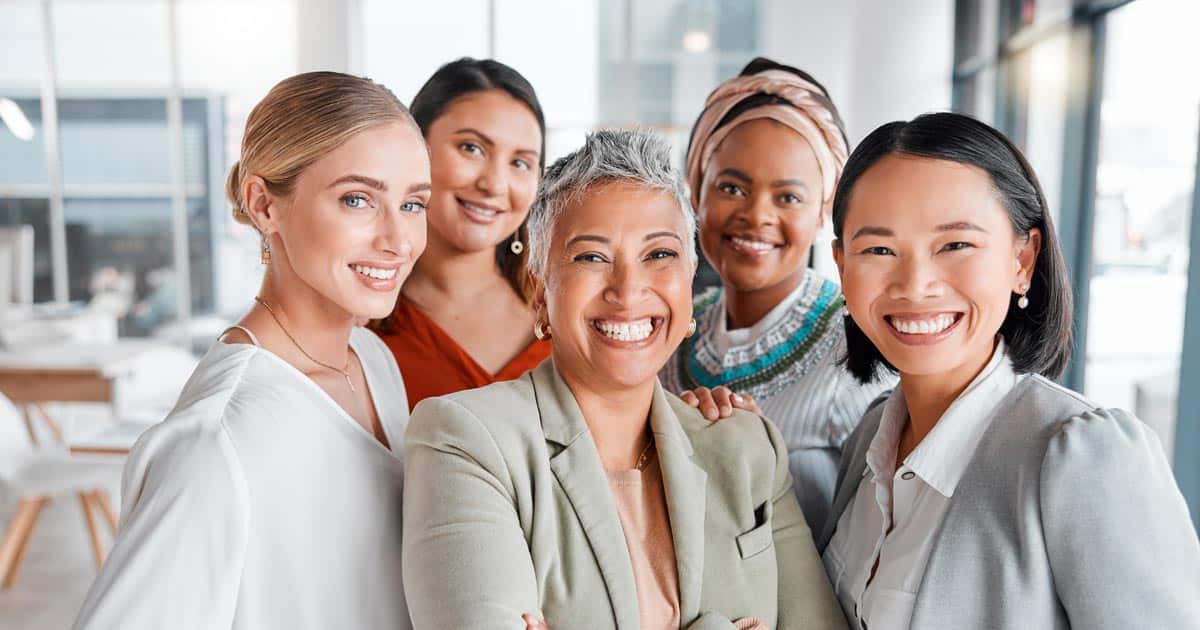The Role of Allyship in DEI: Engaging Traditionally Non-marginalized Groups

In a world where diversity, equity and inclusion (DEI) are increasingly recognized not just as ethical cornerstones, but also as effective business practices, engaging everyone in the conversation is pivotal. Yet, one of the most nuanced challenges lies in incorporating the “white male perspective,” or the perspective of those from traditionally non-marginalized groups, into DEI allyship efforts without causing alienation or defensiveness, transforming potential skeptics into allies.
Understanding the landscape: The benefits of DEI in the workplace
Recent data from the Pew Research Center’s “Diversity, Equity and Inclusion in the Workplace 2023” study reveals a complex picture: While a majority (56%) of employed U.S. adults view focusing on DEI at work as a positive thing, a significant portion remains indifferent or skeptical.
This diversity of opinion is reflected across educational environments. In such settings, recognizing this range of perspectives means considering every voice as an integral part of the dialogue, from the enthusiastic ally to the cautious skeptic. This approach ensures all participants, regardless of their stance, are valued and heard, which fosters a more inclusive and holistic learning experience.
DEI commitments: 5 strategies for inclusive engagement
Enhancing strategies for inclusive engagement, particularly with a focus on engaging majority groups as allies in DEI conversations, involves emphasizing how these approaches can facilitate understanding without diminishing anyone’s role. Here’s how you can achieve this:
1. Incorporate diverse perspectives in educational content
By incorporating a broad spectrum of case studies, readings and discussions, educational and corporate training programs can demystify the DEI allyship conversation for majority groups. This content can showcase examples where individuals from these groups have successfully contributed to dismantling systemic barriers, thus illustrating that allyship is both impactful and appreciated. Highlighting stories of positive change led by allies can help dismantle the fear of judgment, showing that their role is crucial and celebrated in the journey toward equity.
2. Engage in experiential learning and empathy building
Engaging in activities that allow individuals to “walk a mile” in someone else’s shoes can significantly reduce biases and foster understanding. For majority group members, these exercises are not about inducing guilt, but about building a bridge of empathy. They can see firsthand the challenges others face and understand the benefits of DEI in the workplace. This realization can transform feelings of defensiveness into DEI commitments—to support and advocate for marginalized voices.
3. Organize inclusive communication workshops
Training that focuses on skills like active listening and conflict resolution is vital in assuring all participants feel their voices are valued. For majority groups, these sessions provide tools to engage in DEI allyship conversations constructively, ensuring they can express their thoughts and questions without fear of misspeaking or contributing to misunderstanding. By learning how to communicate inclusively, individuals are better equipped to participate in sensitive discussions in a way that supports understanding and collaboration.
4. Host guest speakers and facilitate panel discussions
Hearing directly from those with different life experiences can be a powerful catalyst for change. For members of the majority, these narratives can illuminate the realities of systemic inequality in a personal and impactful way. These sessions are designed not to assign blame but to share experiences that encourage empathy, understanding and a shared commitment to action. Seeing role models from their own or similar backgrounds engaging in allyship can also inspire individuals to see how they can contribute positively to DEI leadership efforts.
5. Encourage community engagement and volunteerism
Active participation in DEI initiatives offers a practical way for individuals to engage with the principles of diversity, equity and inclusion outside of theoretical discussions. For the majority, involvement in these activities provides concrete examples of how systemic barriers operate and how they can play a role in dismantling them. This hands-on approach helps shift the perspective from feeling accusatory to empowering. It demonstrates that allyship is about action and that there is a place for everyone in the effort to create a more inclusive society.
By focusing on these strategies, we’re not just making things better in a vague sense; we’re actively inviting everyone to the table, guilt and blame aside. It’s all about organizations and schools creating spaces where everyone feels like they belong and can make a difference. This way, working on DEI allyship becomes something we’re all in together, aiming to lift each other up, with every single person’s effort recognized and appreciated.
Measuring success
The effectiveness of these strategies can be challenging to quantify, but several indicators can provide insight into their impact. Feedback from participants, changes in organizational culture and increased engagement in DEI initiatives are all positive signs. Additionally, the development of a more inclusive language and behavior within the community or organization, as well as an increase in diversity among leadership positions can signal progress.
The role of DEI leadership
Leaders at the top have a significant influence on how everyone sees and approaches DEI. When they jump into DEI leadership training, work on building a place where everyone feels welcome and make sure everyone is held to the same standards, they lead by example. This kind of approach is key to making DEI allyship efforts stick around and make a difference. Bringing in the “white male perspective” to DEI talks isn’t about taking the spotlight off those who’ve been on the margins. It’s more like making the circle bigger so everyone gets to join in. When we all get to chip in, our push for diversity and inclusion gets a real boost. Think of it as the ultimate team effort. Creating a fairer, more inclusive world? It’s on all of us. Mixing it up with people from all sorts of backgrounds, we’re laying down the groundwork for a society that’s genuinely equal and welcoming to everyone.
Photo by PeopleImages.com – Yuri A/Shutterstock.com




+ There are no comments
Add yours